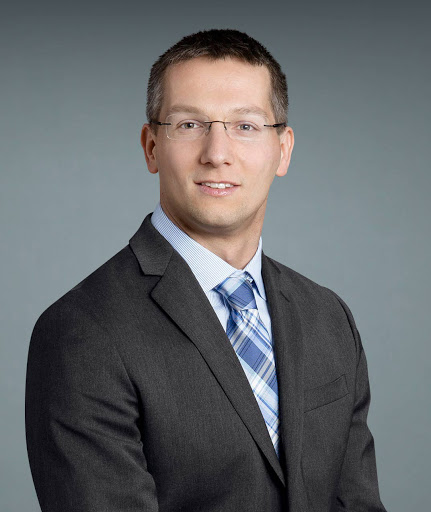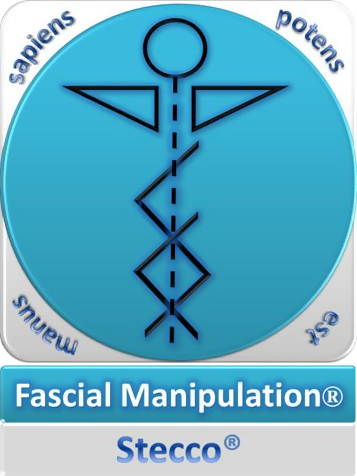Fascial Manipulation Certification Course Level 1
This 6 day program is divided into 2 blocks of three days.
| Dates |
15th May 2020 16th May 2020 17th May 2020 19th June 2020 20th June 2020 21st June 2020 |
| Length | 6 days |
| Venue | UNITED KINGDOM, Oxford |
| Cost |
£849.00 incl VAT - early bird price
Discount on £999.00 Expires 29th Feb 2020 |
| CPD hours | 48 |
Fascial Manipulation
Fascial Manipulation is a manual therapy that has been developed by Luigi Stecco, an Italian physiotherapist. Focusing on fascia, it considers the myofascial system as a three-dimensional continuum.
This method presents a complete biomechanical model that assists in deciphering the role of fascia in musculoskeletal disorders.
In recent years, Prof. Carla Srecco MD and Dr. Antonio Stecco MD have carried out extensive research into the anatomy and histology of the fascia via dissection of unembalmed cadavers in Italy and France. These dissections have provided new histological and anatomical data including the existence of myotendinous expansions between segments, the multi-layer structure of deep fascia and the abundant innervation of the tissue by mechanoreceptors and free nerve endings.
The mainstay of the manual method developed by L. Stecco lies in the identification of specific, localised areas of the fascia in connection with specific limited movements. Once a limited or painful movement is identified, then a specific point on the fascia is implicated and, through the appropriate manipulation of this precise part of fascia, movement can be restored.
(For list of articles by Prof. Carla Stecco and Dr. Antonio Stecco see PubMed)
Who should attend?
Fascial Manipulation courses are intended for medical doctors, physiotherapists, osteopaths and chiropractors. Other registered health practitioners with at least two years of experience and a good working knowledge of musculoskeletal anatomy and physiology and notions of postural analysis maybe accepted after submission of their qualifications.
Fascial Manipulation Courses
Fascial Manipulation Certification course is divided into two levels (6 days per level):
Level 1 – Addresses the myofascial sequences of the body and the Centres of Coordination, small areas where altered fascia causing dysfunctions within the musculoskeletal system are most common.
Level 2 – Consolidates clinical application and introduces Centres of Fusion, points that are extremely important for proprioceptive dysfunctions.
On Level 1 and 2 participants learn to evaluate musculoskeletal dysfunctions in reference to the human fascial system, and to apply the Fascial Manipulation method as taught by Luigi Stecco. Lessons include fascial anatomy and physiology, the biomechanical model used in application of this method and the anatomical localisation of key fascial points. Theory lessons demonstrations, and practice between participants alternate during the day.
Cancellation Policy
All cancellation must be made in writing to Octopus Physiotherapy at the email address
info@octopusphysiotherapy.com. Substitute delegates are welcome at any stage. Cancellation made before 20th of
February 2018 will receive full refund less £50 cancellation fee. Cancellation before 20th of March will receive
50% of the refund. We regret that no refund is available if cancellation received after 20th March, for
whatever reason.
About Octopus Physiotherapy
Octopus Physiotherapy is the trading name Adam Glowacz.
Registered Office:
14 Acacia Avenue, Oxford, OX47GY, UK,
Copyright @ Octopus Physiotherapy 2017. All rights reserved.
FASCIAL MANIPULATION ® Programme Level 1
Note: this programme may be subject to changes according to organizational requirements of either the venue or the Instructor.
Day 1
| 08.30 – 08.45 | Welcome and Introduction to Level 1 | |
| 08.45 – 10.00 | Fascial Anatomy: layers and continuity, histology, innervation | |
| 10.00 – 10.20 | Break | |
| 10.20 – 11.00 | Biomechanical model and Glossary of terms used in Fascial Manipulation® | Theory |
| 11.00 – 12.30 | Sequence of antemotion: upper limb presentation, demonstration of centers of coordination, movement tests, position of treatment | Theory/Demonstration/Student practice |
| 12.30 – 13.30 | Lunch | |
| 13.30 – 15.00 | Sequence of antemotion: head and trunk | Theory/Demo/Pratical |
| 15.00 – 16.00 | Sequence of antemotion: lower limb | Theory/Demo |
| 16.00 – 16.20 | Break | |
| 16.20 – 16.40 | Sequence of antemotion: lower limb | Practical |
| 16.40 – 17.30 | Manipulation of the Fascia – Treatment | Theory |
Day 2
| 08.30 – 09.20 | Physiology of the myofascial unit and mf sequences | Theory |
| 09.20 – 10.40 | Sequence of retromotion: upper limb | Theory/Demo/Practical |
| 10.40 – 11.00 | Break | |
| 11.00 – 12.30 | Sequence of retromotion: head and trunk | Theory /Demo/Practical |
| 12.30 – 13.30 | Lunch | |
| 13.30 – 14.40 | Sequence of retromotion: lower limb | Theory/Demo /Practical |
| 14.40 – 15.30 | Part 1 The Assessment Chart for Fascial Manipulation (from anamnesis to hypothesis – significant questions, abbreviations) and demonstration | Theory |
| 15.30 – 15.50 | Break | |
| 15.50 – 16.10 | Part 2 The Assessment Chart for FM - from hypothesis to verification and treatment | Theory |
| 16.10 – 17.30 | Sequence of lateromotion: upper limb | Theory/Demo /Practical |
Day 3
| 08.30 – 10.00 | Sequence of lateromotion: head and trunk | Theory/Demo/Practical |
| 10.00 – 10.30 | Sequences of lateromotion: lower limb | Theory/Demo |
| 10.30 – 10.45 | Break | |
| 10.45 – 11.15 | Sequences of lateromotion: lower limb | Practical |
| 11.15 – 12.30 | Treatment of a patient by instructor – anamnesis, hypothesis, movement tests and palpation verification, treatment, reassessment. | Demo |
| 12.30 – 13.30 | Lunch | |
| 13.30 – 14.40 | Sequence of mediomotion: upper limb | Theory/Demo/Practical |
| 14.40 – 16.00 | Sequence of mediomotion: head and trunk | Theory/Demo/Practical |
| 16.00 – 16.15 | Break | |
| 16.15 – 17.15 | Sequence of mediomotion: lower limb | Demonstration and discussion |
| 17.15 – 17.30 | Question time |
Day 4
| 08.30 – 10.00 | Sequence of extrarotation: upper limb | TheoryDemo/Practical |
| 10.00 – 10.15 | Break | |
| 10.15 – 11.45 | Sequence extrarotation: head and trunk | Theory /Demo/Practical |
| 11.45 – 12.30 | Sequence of extrarotation: lower limb | Theory |
| 12.30 – 13.30 | Lunch | |
| 13.30 – 14.00 | Sequence of extrarotation: lower limb | Demo/Practical |
| 14.00 – 15.30 | Sequence of intrarotation: upper limb | Theory/Demo/Practical |
| 15.30 – 15.50 | Break | |
| 15.50 – 17.30 | Sequence of intrarotation: head and trunk | Theory/Demo/Practical |
Day 5
| 08.30 – 10.00 | Sequence of intrarotation: lower limb | Theory/Demo/Practical |
| 10.00 – 11.00 | Comparative assessment: movement and palpatory assessments of the upper limb, lower limb, head and trunk | Group work with instructor |
| 11.00 – 11.20 | Break | |
| 11.20 – 12.30 | Comparative assessment: movement and palpatory assessments of the upper limb, lower limb, head and trunk | Group work with instructor |
| 12.30 – 13.30 | Lunch | |
| 13.30 – 14.30 | Comparative assessment: movement and palpatory assessments of the upper limb, lower limb, head and trunk | Group work with instructor |
| 14.30 – 15.00 | Assessment Chart for Fascial Manipulation (revision) | Theory |
| 15.00 – 15.15 | Break | |
| 15.15 – 17.30 | Treatment of a patient by students: Compilation of assessment chart hypothesis, movement tests, palpatory verification, and treatment | Group work |
Day 6
| 08.30 – 10.00 | Presentation and discussion of cases by students | Discussion |
| 10.00 – 10.15 | Break | |
| 10.00 – 10.50 | Fascial Manipulation - treatment strategies, progression of treatment, patient advice | Theory |
| 10.50 – 12.30 | Presentation and discussion of cases by students | |
| 12.30 – 13.30 | Lunch | |
| 13.30 – 15.00 | Treatment of a patient | Group work |
| 15.00 – 15.15 | Break | |
| 15.15 – 16.00 | Exam Level 1 | |
| 16.00 – 16.30 | Diploma presentation and Closure of course |
Antonio Stecco MD, PhD

Introduction
Assistant Professor at The New York University School of Medicine.
Physiatrist, President of Fascial Manipulation Association, Assistant to the President of the International Society of Physical Medicine and Rehabilitation (ISPRM) from 2012 to 2014.
Research
Scientific activity devoted to the study the human fasciae from a macroscopically, histologically and physio-pathologically point of view.
He personally made over 100 cadaver dissections for research.
Fascial Manipulation
From 2007 he organizes and personally holds theoretical-practical courses about the Fascial Manipulation method in all the five continents.
Author of more than 40 in extensor papers about the fascia. Co-Authors of 5 books and co-author of different chapters of international books published by Elsevier.
Contact Details
Organiser: Octopus Physiotharapy
Email Us:
info@octopusphysiotherapy.co.uk
Tel:
